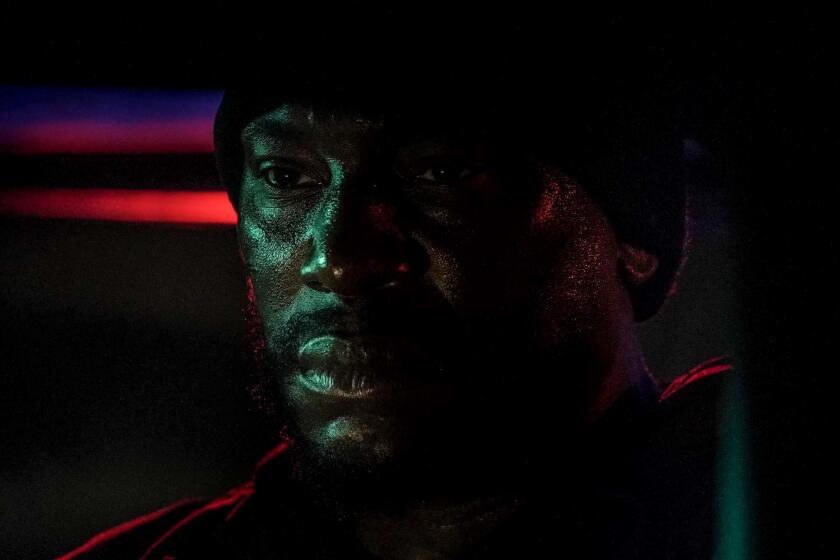Round two for ‘Brothers Bloom’
How best for a filmmaker to avoid the sophomore slump? For writer-director Rian Johnson, it meant employing elaborate ruses and stylish schemes.
To follow up his cult-popular debut “Brick,” a moody, downbeat post-noir film that turned the minor humiliations and intrigues of high school into the stuff of a hard-boiled detective mystery, Johnson has delivered the ambitiously bright and bold jet-set con-men caper “The Brothers Bloom.”
The new film follows two scheming brothers (Mark Ruffalo and Adrien Brody) as they set their sights on one final score hustling a wealthy, eccentric loner (Rachel Weisz). Initially slated for release by distributor Summit Entertainment last fall, the film premiered at the Toronto International Film Festival in September. After several date changes, “The Brothers Bloom” begins a platform release in Los Angeles and New York on May 15.
This puts the 35-year-old filmmaker in the position of having weathered one round of reviews and responses, and now awaiting another. Johnson’s films have had an unusually divisive effect on audiences, with some loving their mannered eccentricities and conjured charms while others finding those very aspects frustrating and enraging. Reading the dizzyingly diverse reviews from critics who saw the film in Toronto, one could get the impression that “The Brothers Bloom” was “a magic trick of a film.” Or that it was “vastly more interesting in description than in the playing.” Or perhaps it was “a gorgeous and delightful movie.” Or maybe it suffered from an “over-calibrated hyper sense of self.”
“The critical reaction to ‘Bloom’ has been similar to ‘Brick,’ ” Johnson said during a recent interview. “There are people onboard with it and people who are not.”
Regardless of the responses to the finished film, “Bloom” is inarguably a step up in terms of logistics and production, with its big-name actors and far-flung locations. Producer Ram Bergman, who also worked with Johnson on “Brick” -- made for less than $500,000 -- recalled their initial conversations as the filmmaker set out to write what became “Bloom.”
“I said to him, ‘Don’t limit yourself on budget or scope or anything, just write what you want. If you have a good script we will figure out how to do it,’ ” Bergman said.
Where “Brick” was shot in part at the San Clemente high school that Johnson attended, “The Brothers Bloom” called for a series of romantic, picture-postcard locales for the madcap misadventures of its characters. Ultimately, the production set up its home base in Serbia and traveled to locations in Romania, the Czech Republic and Montenegro. The results look much more lavish than the film’s still-modest budget: less than $20 million.
“Budgets are just budgets,” Bergman said. “You can look at a certain number, and everyone can get something different out of it. The important thing is what you put in front of the camera.”
As with “Brick,” which premiered at the 2005 Sundance Film Festival before receiving a theatrical release in early 2006, Johnson has created a world unto itself for “Bloom.” This time out, it is a world of remote mansions and castles, steamer ships and passenger trains, exotic ports of call and lavish hotel lobbies, with hats and gloves and casual card tricks. Ruffalo seems to be channeling a dapper, roguish variation on Marcello Mastroianni crossed with Han Solo, while an exuberant Weisz never lets on whether she’s a mark or a sharpie.
As Ruffalo’s character, Stephen Bloom, orchestrates one carefully planned confidence scheme after another, his brother, known simply as Bloom (Brody), becomes disaffected by their workaday life of swindles and getaways, where the line between fact and fiction has long since been obliterated. Johnson follows this line to wrap the film into a meditation on the nature of storytelling and the way lives can become self-created narratives.
“The style is there because it very much serves the story,” Johnson said. “With ‘Brick,’ the style with language and the way it was shot was to create a world obviously elevated from the very first frame above a typical high school. And ‘Bloom,’ it’s the same thing. So especially at the beginning of the film, it starts off very much with that heavy dose of style because you’re inside the story that Stephen the older brother is writing. . . . I hope I would never impose style on something that isn’t to a specific purpose in the piece itself. It’s not ‘What little jewel box can I create next?’ It has to be something relevant to me.”
With its storybook/diorama formalities, fastidiously specific production and costume design, dry humor and fluid camera work, “Bloom” has been dogged since its first screenings by dismissive comparisons to the work of Wes Anderson.
“Stepping back, I can see the superficial stylistic correlations,” Johnson said, “but I know that’s not the place I was coming from. And I know the film is very much my own sensibility, and I know anyone who has a sense of film history that goes back more than 15 years can spot 10 other movies I ripped off a lot harder than ‘The Life Aquatic.’ ”
At the moment, Johnson is back to writing, working on a time-travel hit man story called “Looper” that promises to be another world unto itself. For now, he plans to continue quietly pursuing his own idiosyncratic vision, regardless of the split responses.
“All my favorite movies are somebody else’s least favorite movie,” he says.
--
More to Read
Only good movies
Get the Indie Focus newsletter, Mark Olsen's weekly guide to the world of cinema.
You may occasionally receive promotional content from the Los Angeles Times.









